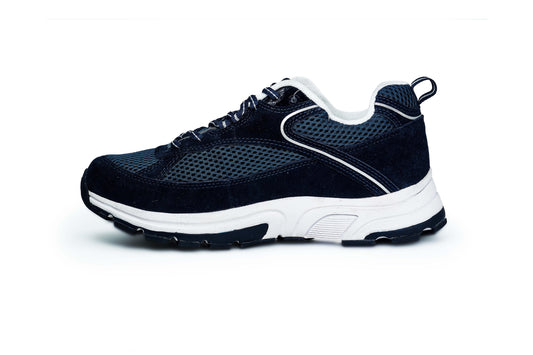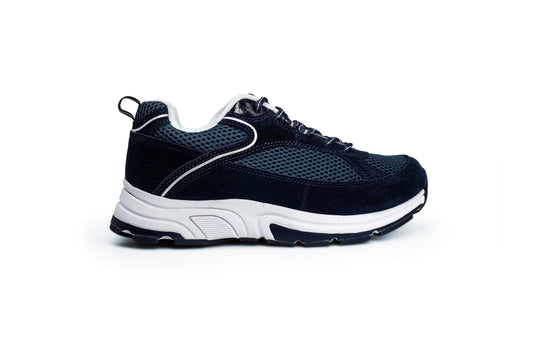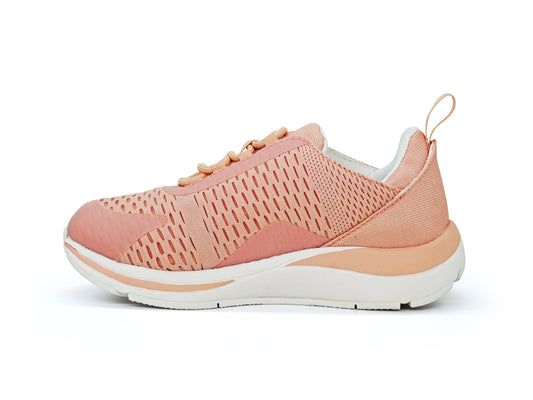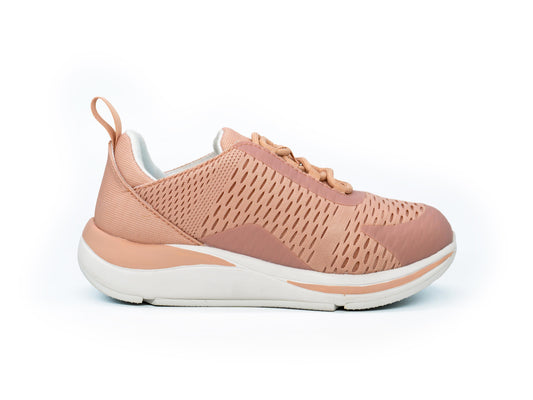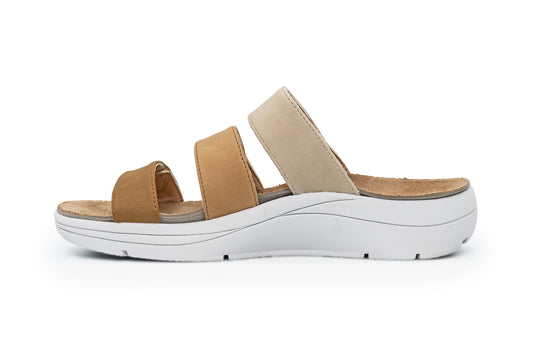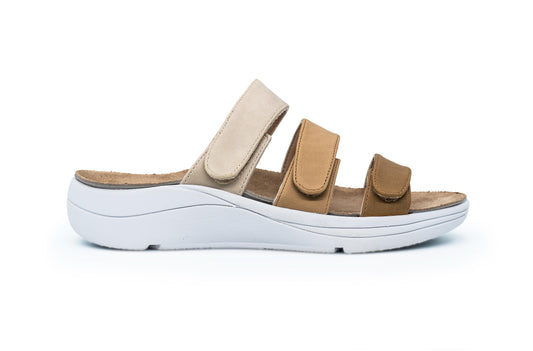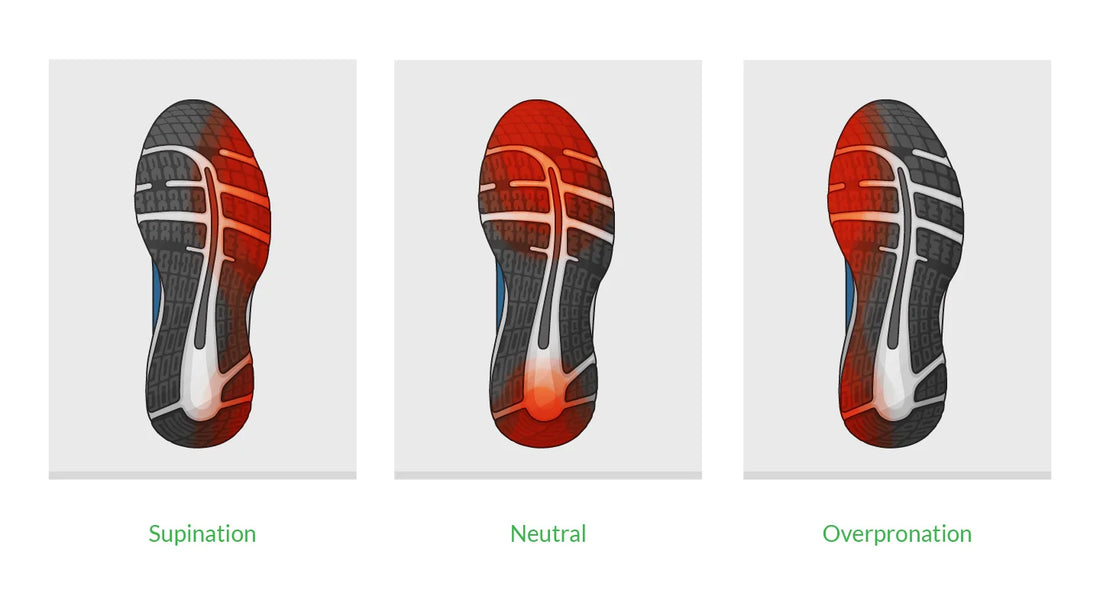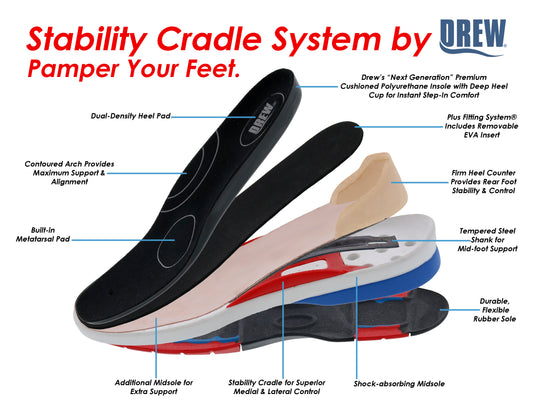Understanding Supination, Overpronation, and the Right Footwear for Your Comfort
Pronation, the natural side-to-side movement of the foot during daily activities, can deviate from the norm, leading to conditions known as overpronation and underpronation. Both of these deviations may cause stress on the feet, potentially resulting in significant foot problems if not properly managed.
Supination: Supination is the outward rolling motion of the foot during the later part of the gait cycle. This occurs after the foot has adequately pronated and transitions to a rigid level, assisting in propelling the body forward. Excessive supination, or oversupination, happens when the foot rolls excessively outward during the later stages of the gait cycle. Weight is distributed to the outer edge of the foot, reducing the foot's ability to pronate properly and leading to issues such as ankle pain, plantar fasciitis, and shin splints.
Underpronation (Oversupination):
Underpronation, or oversupination, is less common. It occurs when the foot excessively rolls outward during the later stages of the gait cycle, causing weight to be distributed to the outer edge of the foot. This hinders proper pronation and can result in conditions like high arches, outer edge calluses, and discomfort.
Identifying Pronation Type
Examine Footwear:
- Inspect wear patterns on shoe soles, looking for signs of supination or underpronation.
- Place old shoes on a flat surface to check for outward (supination) or inward (overpronation) tilting.
- Be attentive to discomfort or pain in the feet, ankles, knees, or hips.
-
Symptoms may include ankle pain, calluses, or conditions like plantar fasciitis.
Wet Test:
- Wet the soles of your feet and observe the footprint:
- Clear arch imprint suggests neutral pronation.
- Minimal or no arch imprint indicates supination.
-
Wide, flattened arch imprint may signal overpronation.
Professional Evaluation:
-
Consult with a podiatrist for a precise assessment, involving gait analysis and other evaluations.
Common Causes:

Underpronation:
- High arches.
- Tight Achilles tendon.
- Foot or leg injuries.
-
Unsupportive shoes.
Overpronation:
- Flat feet or low arches.
- Muscle weakness.
- Foot or ankle injuries.
- Excess weight.
Footwear and Orthotic Solutions:
Custom Orthotics:
- Supination: Provide support, cushioning, and flexibility for high arches.
-
Overpronation: Correct excessive inward roll with support and alignment.
Proper Footwear:
- Underpronation: Choose flexible, cushioned, and supportive shoes with a wide toe box.
- Overpronation: Opt for shoes with firm heel counters, a wide support base, and stability features.
Preventing Injuries:
- Overpronation:
Choose flexible and lightweight shoes with premium orthotic insoles.
Consider custom orthotics for arch and heel support.
Focus on proper form and perform strengthening exercises.
- Underpronation:
Opt for shoes with heel counters, shock-absorbing midsoles, and a wide base of support.
Perform foot-strengthening exercises to improve weight distribution.
In conclusion, understanding your pronation type and addressing it with suitable footwear and orthotic solutions can significantly improve foot health and prevent associated issues. Seeking professional advice is crucial for a precise assessment and tailored recommendations.

